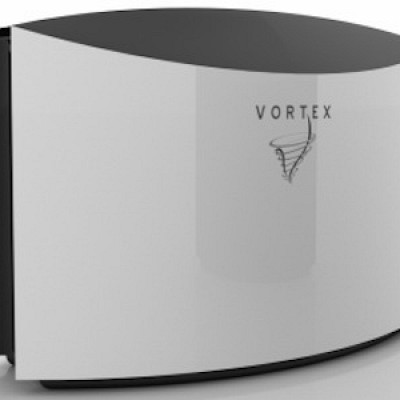Both house and industries establishments use extended cords since they are flexible and can easily be used. They enable the interconnection of electrical appliances where outlet is not available hence a key element in operation.
However, like all electrical equipment, extension cords are not devoid of issues that render them dangerous and non usable. They can range from mere inconveniences to possible hazards like the fires in the electrical circuit or electrical shocks.
In this article, five techniques that can help one understand how to manage extension cords, as well as the dangers of using them, will be discussed.
1. Inspect for Physical Damage
Physical damage done to an extension cord compromises its efficiency and in severe cases becomes a safety concern to the user. Inspections should be conducted frequently, which can be achieved by assessing the likelihood of a fracture at the length of the extension cord. It is, therefore, relevant to address these factors to promote the correct and safe utilization of the extension cords.
Check if the item is scratched or has been punctured in some way through transportation or some other factor.
These damages may occur from use or accidents in normal business activities. Here you may use electrical tape if you want to minimize minor deficits like cuts or fraying.
However, if the extension cord is damaged significantly that some of the core wires are exposed, then it is advisable to replace the entire set. It is always important to exercise caution whenever working with any electrical equipment.
2. Check the Contact Points of the Plug and the Socket
There should be a proper connection between the plug and the socket in order for the product to function effectively. Noncompatible plugs and sockets may lead to arcing, overheating, and other conditions that can be perilous.
When using the cord, lay a hand on it and check for heat to find out if it is too hot. Such might mean that there is an internal problem or that the cord is being overloaded with too much current.
Poor electrical connectivity such as loose or corroded contact points may result to low electricity flow or even pose danger to life. Plug and sockets should be used reciprocal to one another at all times, according to recommendation by the National Electrical Manufacturers Association (NEMA). Check the plug’s prongs by examining them for any discoloration or any signs of damage that may make you think that the plug has been overheated.
Using a dry cloth wipe the connections to eliminate the possibility of having any dirt or any other particle stuck on them.
However, to mitigate electrical risks, one has to ensure that plug and socket connections are well done. It is also important to ensure that the plug and socket meet the right voltage and current ratings and that they are compatible in some ways.
3. Electrical Continuity Feasibility Test
The electrical continuity test is an essential one that always ensures the extension cord has proper conductivity of electricity. For this, a multimeter is useful as it helps you measure several things in circuitry. First of all, one has to guarantee that the cord is disconnected from any sort of energy source. After switching the multimeter settings to continuity, touch the probes of the multimeter to the plug prongs.
If the continuity test is successful, you should hear a beep or a tone that should be produced by the multimeter, signifying that the circuit is complete. Otherwise, it may point to the fact that the cord has been severed or, at the very least, the connection on the two ends is not tight enough. Sometimes, it can be quite challenging to determine the exact area where the break has occurred. In such cases, the suggested solution might have been to change the cord with a better one as the quick solution.
4. Use Ground Fault Circuit Interrupters (GFCIs)
Ground Fault Circuit Interrupters (GFCIs) are essential protective devices that will shut off the voltage circuit when a ground fault is identified in the wire. A ground fault is a direct path of electricity to the ground, possibly due to electric equipment contacting water or when insulation is broken.
GFCIs help avoid serious electrical mishaps in areas such as industrial segments where working with moisture or dealing with heavy equipment is a regular practice. For instance, manufacturing floors, construction sites, or any working area with concrete or arduous surface plans are more vulnerable to ground faults. Adopting GFCIs in these contexts guarantees that the circuit is tripped in the event of a change of current, as this reduces the danger of electrocution to the workers.
Furthermore, GFCIs help eliminate electrical fires resulting from ground faults. As evidenced by the use of high-powered equipment and large electrical systems in industries, the likelihood of ground faults is high. Because of the ability to rapidly turn off power as soon as a fault is noted, GFCIs help prevent electrical fires and preserve important structures and items.
5. Ensure Proper Storage and Handling
Extension cables may be kept in good condition and have a significantly increased lifespan with proper care and storage. Keeping things free of kinks and tangles is crucial, especially when not in use. The cables should be kept out of direct sunlight and dampness in excellent, dry locations.
Cord reels and hooks are great solutions for tangle-free storage that minimizes wear and tear. Furthermore, remember that tugging the chord too hard or bending it might harm the inside of the cord. Your extension cables will last longer and function depending on how they are handled and stored correctly, keeping them in good shape.
Conclusion
Extension cords require routine maintenance and inspection for safe and effective usage. These five troubleshooting methods can help you find and fix common problems so your wires stay in good working order.
Remember that your first concern while working with electrical equipment should always be safety.



































